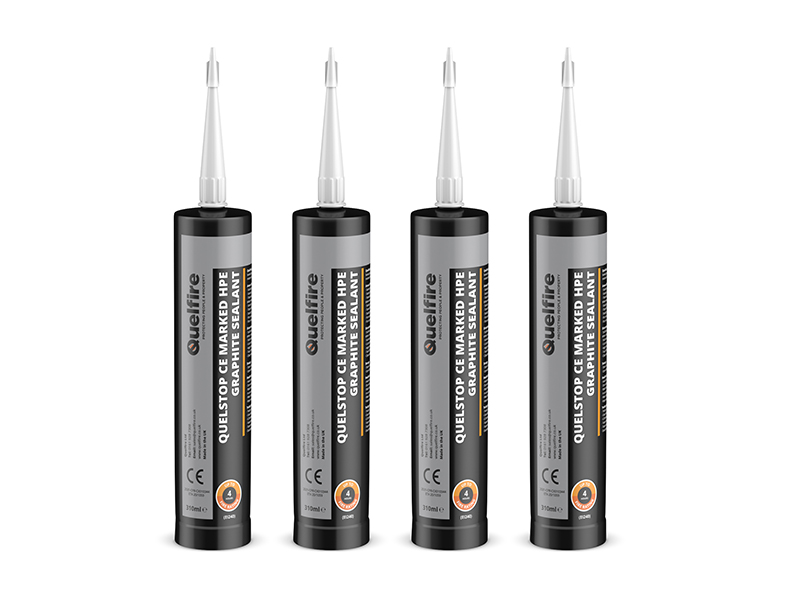What is HPE sealant and acrylic sealant? Product Information
HPE (high pressure exerting) sealant is an acrylic-based, intumescent sealant with high expansion graphite content, whereas the acoustic acrylic sealant is a low reaction, intumescent sealant.
They both work to maintain the fire rating of walls and floors where services have passed through them and provide a fire-rated linear joint or gap seal.
How are they applied?
Both HPE sealant and acrylic sealant can be used as stand-alone products or as part of a system.
For example, intumescent acrylic sealant can often be used to seal around services with limited combustibility such as cable, cable trays, bundles, ladders, and metallic pipes.
HPE sealant can be used to seal around services including combustible insulation and combustible pipes.
They can also be used alongside other firestopping products to reinstate the integrity of the wall.
Acrylic sealant should always be applied to all cuts, joints, and exposed edges of fire batt. And either acrylic or HPE sealant can potentially be used with the fire batt and in conjunction with fire collars and fire sleeves, depending on the specific services and required fire rating.
Both sealants are gunned into the annular space in or between the separating element(s) to a certain depth utilising various backing material.
How HPE sealant and acrylic sealant work and their key differences
In the event of a fire, compartmentation, if done correctly, is what contains the fire to its area of origin and, firestopping products like HPE sealant and acrylic sealant play their part in helping to achieve this.
When it comes to sealants, it can be difficult to determine which product should be used and to understand how they will perform in a fire scenario.
When HPE sealant is exposed to fire, the intumescent material will react by expanding, increasing in volume whilst simultaneously decreasing in density.
By swelling, this causes a carbonaceous char which essentially works to close the gap left behind by the melted/ burning services. This makes it suitable to be used around some combustible services, such as CPVC pipes or certain small diameter plastic pipes.
On the other hand, acrylic sealant is mainly used for service penetrations with limited combustibility and has fire-resistant properties. The slight addition of intumescent causes it to swell when exposed to fire and form a low-reaction char, again, helping to stop the spread of fire and smoke.
Other properties of HPE and acrylic sealant
Acrylic sealant is a highly versatile firestopping product, it is commonly used in low movement joints and remains flexible. It is easily applied and smoothed over: it does not drip.
It also holds moist substrates, is halogen free and resists vermin and fungi.
In a similar way to acrylic sealant, HPE sealant resists fungi and vermin.
It also has a high expansion ratio and is smoke, gas, watertight and airtight.
How to choose between the two products
When weighing up what type of sealant to use, it is always important to first check the tested solutions available and the scope of application the relevant manufacturer has, as well as utilising their guidance.
The tested solutions available must be the focus when choosing which product to use. Only when you have tested solutions available for both HPE and acrylic sealant, with guarantee of fire performance, then you can begin to consider cost.
QuelStop HPE Sealant and Acrylic Sealant from Quelfire
Learn more about the features and benefits of our QuelStop HPE Sealant and QuelStop Acrylic Sealant and the scope of application we have here at Quelfire.
Our sealant tubes are now made from 50% recycled plastic >>>

